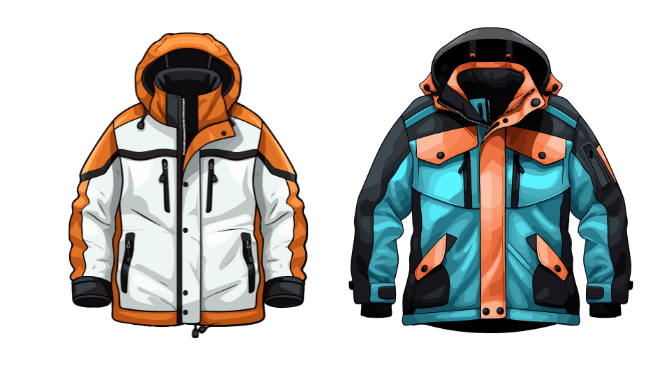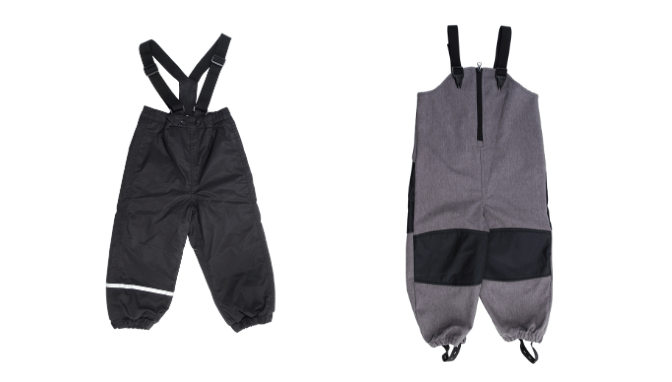
It’s winter time. If we could ski and had the equipment, a lot of us would do so. But before you can enjoy the sport to the fullest, you need to acquire the best equipment and attire. How much you enjoy skiing and how safe you are will depend on your choice of ski clothing.
We will examine some factors to take into account when choosing these clothes, as well as the reasons why some options are more crucial than others, given their significance. You might be shocked by the actual factors that influence your skiing equipment.
Table of Contents
- 1 What Is Ski Clothing?
- 2 Types of Ski Clothing
- 3 Choosing the Right Ski Jacket
- 4 Selecting the Perfect Ski Pants
- 5 Accessorizing for Comfort and Safety
- 6 Choosing the Right Ski Clothing: Factors to Consider
- 7 Top Brands in Ski Clothing
- 8 Tips for Maintaining Ski Clothing
- 9 Conclusion
- 10 Frequently Asked Questions
What Is Ski Clothing?
Ski clothing isn’t just about fashion; it’s about functionality. When you’re out in the mountains, braving the elements, your clothing becomes your shield against the cold, wind, and snow.
You can now look stylish while skiing thanks to the ever-evolving fashion trends. This is a result of designers who are constantly searching for fresh approaches to impress existing customers and draw in new ones.
Types of Ski Clothing
Ski clothing encompasses a range of garments designed to keep you warm, dry, and comfortable in varying conditions:
Ski Jackets
Your ski jacket is your first line of defense against the elements. Consider factors like insulation, waterproofing, and ventilation when selecting the perfect jacket for your needs.
Ski Pants
Ski pants should provide ample protection against snow and wind while allowing for freedom of movement. Look for features like reinforced knees and seat areas for enhanced durability.
Base Layers
Base layers are designed to wick moisture away from your skin, keeping you dry and comfortable throughout the day. Merino wool and synthetic blends are popular choices for base layer fabrics.
Mid Layers
Mid layers add insulation and warmth without adding bulk. Fleece jackets and synthetic insulated vests are versatile options for layering under your ski jacket.
Accessories
Don’t overlook essential accessories like gloves, hats, goggles, and socks. Invest in quality items designed specifically for skiing to ensure comfort and protection.
Choosing the Right Ski Jacket

Your ski jacket is arguably the most critical piece of clothing in your ski wardrobe. Consider the following factors when selecting the perfect jacket:
Insulation Types
Down insulation offers exceptional warmth-to-weight ratio, while synthetic insulation performs well in wet conditions. Choose the type of insulation based on your skiing preferences and the climate of your chosen ski destination.
Waterproofing Technologies
Look for jackets with advanced waterproofing technologies like Gore-Tex or DWR (Durable Water Repellent) coatings. These features help keep you dry and comfortable, even in heavy snow or rain.
Ventilation Options
Ski jackets with pit zips or mesh-lined vents allow you to regulate your body temperature by releasing excess heat during strenuous activity.
Selecting the Perfect Ski Pants

Ski pants should provide reliable protection and comfort throughout your day on the slopes. Here’s what to consider when choosing ski pants:
Durability and Waterproofing
Opt for ski pants constructed from durable materials like nylon or polyester, with reinforced seams and waterproof coatings to keep you dry in all conditions.
Insulation and Ventilation
Choose ski pants with sufficient insulation for warmth without restricting movement. Look for zippered vents to release excess heat during intense activity.
Accessorizing for Comfort and Safety
Don’t forget to accessorize with essential items for comfort and safety on the slopes:
Gloves and Mittens

Invest in waterproof and insulated gloves or mittens to keep your hands warm and protected from the cold.
Hats and Beanies
A quality ski hat or beanie helps retain heat and protects your head and ears from the cold wind and snow.
Goggles

Choose goggles with UV protection and anti-fog lenses for clear vision in varying light conditions.
Socks

Opt for moisture-wicking and cushioned ski socks to keep your feet warm, dry, and comfortable throughout the day.
Choosing the Right Ski Clothing: Factors to Consider

Although it may seem simple, choosing the right ski apparel is not an easy task. Even though you can easily select various warm items for that purpose, dressing in a certain way might improve your experience. As a result, take into account the following:
Budget
Your shopping destination affects how much you spend. The clothes might not be pricey, but what you choose could have an impact on the cost. It is best to stick to brands or retailers that fit within your budget if you have one. Also, if you go skiing more often, your expenses might go up. It’s usually best to have a reasonable budget before you go shopping.
Quality of Material
The quality of clothing material matters significantly. For your outer layer, it should be both waterproof and breathable. Features such as sealed seams and waterproof zippers help keep moisture out while allowing body heat to escape, preventing overheating.
Waterproofing and Breathability
Skiing involves exposure to snow and moisture, making waterproofing essential. Additionally, breathable fabrics allow sweat to escape, keeping you dry and comfortable throughout your day on the mountain.
Fit and Comfort
Ski clothing should provide freedom of movement while not being too loose that it allows cold air to seep in. Pick sizes and cuts that leave enough room for your layers but still keep you snug.
Temperature and Weather
The temperature and possible weather changes during the day will influence your clothing choice. For colder conditions, go for thicker mid-layers. On warmer or variable weather days, choose lighter wears with zippers for ventilation.
Safety and Protective Gear
Don’t forget your helmet, goggles, gloves or mittens, and neck warmer. Helmets protect your head while goggles shield your eyes from harsh wind and UV rays. Gloves/mittens and neck warmers should provide both warmth and moisture management.
Personal Preference
Finally, personal preference plays a role. Some skiers prefer heavier insulation; others opt for lighter layers and electric heaters. Choose color schemes and patterns you like — after all, skiing isn’t just about the ride down, but also about looking and feeling good while you’re doing it.
Top Brands in Ski Clothing
Explore reputable brands known for their quality and performance in ski clothing, such as The North Face, Patagonia, Arc’teryx, and Columbia.
Tips for Maintaining Ski Clothing
- Follow care instructions provided by the manufacturer.
- Wash and re-waterproof your ski gear regularly.
- Repair any damage promptly to prevent further deterioration.
Conclusion
Choosing the right ski clothing is essential for a comfortable and enjoyable skiing experience. By considering factors like material, insulation, waterproofing, and fit, you can stay warm, dry, and protected on the slopes. Invest in quality gear from reputable brands and prioritize sustainability whenever possible. With the right ski clothing, you’ll be ready to tackle any mountain adventure with confidence and style.
READ ALSO: What Are The Best Color Combinations with Grey Pants?
Frequently Asked Questions
Q1: What are the key factors to consider when choosing ski clothing?
When selecting ski clothing, it’s essential to consider factors like insulation, waterproofing, breathability, fit, comfort, and personal preferences. These aspects ensure that you stay warm, dry, and comfortable on the slopes while enjoying your skiing experience.
Q2: Why is waterproofing important in ski clothing?
Waterproofing is crucial in ski clothing because it protects you from moisture, such as snow and rain, keeping you dry and comfortable throughout your day on the mountain. Additionally, waterproofing prevents water from seeping into your clothing, which can lead to discomfort and potential health issues in cold conditions.
Q3: What types of materials are best for ski clothing?
The best materials for ski clothing are those that are waterproof, breathable, and durable. Common materials include Gore-Tex, nylon, polyester, and insulated fabrics like down and synthetic insulation. These materials provide protection against the elements while allowing moisture to escape, keeping you warm and dry.
Q4: How should ski clothing fit for optimal performance?
Ski clothing should provide freedom of movement while maintaining a snug fit to keep you warm and comfortable. It’s essential to choose sizes and cuts that allow room for layering without being too loose, as excess fabric can hinder movement and allow cold air to seep in.
Q5: Are there any fashionable trends in ski clothing?
Yes, ski clothing trends are constantly evolving to offer both style and functionality. Designers are incorporating fresh approaches and innovative technologies to create fashionable yet practical ski apparel. Some trendy elements include vibrant colors, sleek designs, and eco-friendly materials, catering to both fashion-conscious skiers and environmentally conscious consumers.